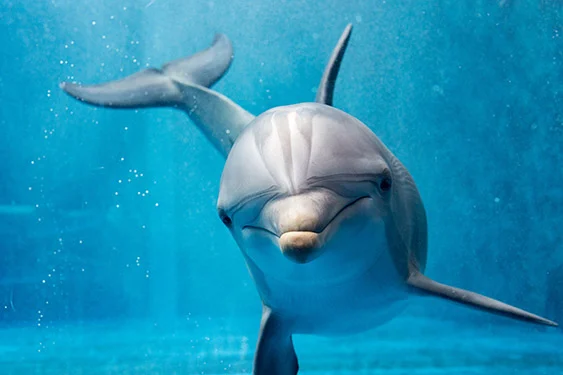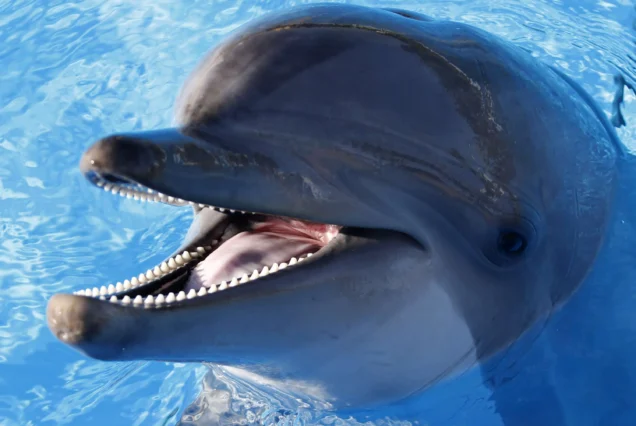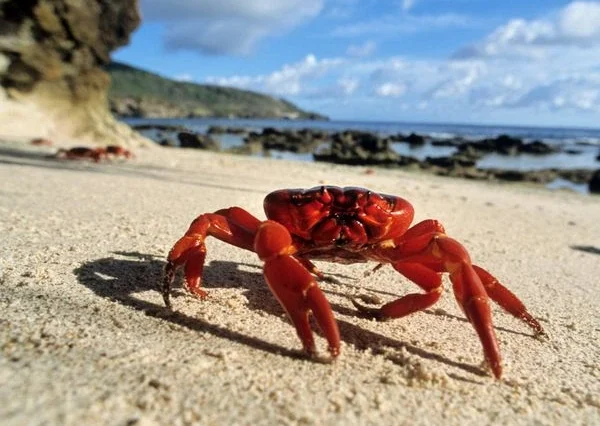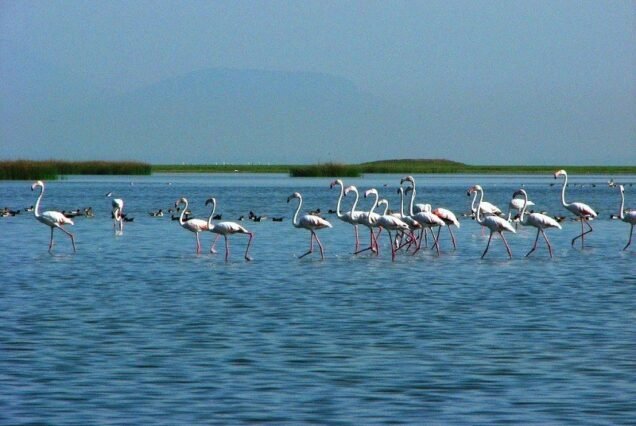Overview
Dolphins are highly intelligent marine mammals known for their playful behavior and acrobatic displays. Here are some key points about dolphins:
- Physical Characteristics: Dolphins have streamlined bodies, curved dorsal fins, and elongated snouts called rostrums. They typically range in size from about 4 to 30 feet in length, depending on the species. Their skin is smooth and usually gray in color, although some species may have patterns or markings.
- Habitat: Dolphins inhabit oceans and seas around the world, from coastal waters to deep oceanic regions. They are highly adaptable and can be found in a wide range of marine environments, including tropical and temperate waters.
- Social Structure: Dolphins are social animals and often form complex social structures within their groups, known as pods. These pods can vary in size from a few individuals to hundreds of dolphins, depending on the species and the availability of food and habitat.
- Communication: Dolphins are known for their sophisticated communication skills, using a combination of vocalizations, body language, and echolocation to communicate with each other and navigate their environment. They produce a variety of clicks, whistles, and squeaks, which they use to communicate messages and establish social bonds.
- Diet: Dolphins are carnivorous predators and feed on a variety of marine species, including fish, squid, and crustaceans. They use their sharp teeth and powerful jaws to catch and consume their prey, often hunting in coordinated groups to increase their chances of success.
- Behavior: Dolphins are playful and curious animals, known for their acrobatic leaps, flips, and spins. They engage in a variety of playful behaviors, including surfing on waves, riding the bow waves of boats, and interacting with objects and other marine creatures.
- Conservation: Dolphins face various threats in the wild, including habitat loss, pollution, overfishing, and entanglement in fishing gear. Conservation efforts are underway to protect dolphin populations and their habitats, including the establishment of marine protected areas and regulations to reduce human impacts on dolphin populations.
Included/Excluded
- Specialized bilingual guide
- Private Transport
- Entrance fees (Cable and car and Moon Valley)
- Box lunch water, banana apple and chocolate
- Departure Taxes
- Entry Fees
- 5 Star Accommodation
- Airport Transfers
Tour Plan
Day 01
Departure
- Arrival in Satapada: Arrive at Satapada, a serene village located on the Chilika Lake in Odisha, known for its dolphin-watching tours. Check into your accommodation and take some time to relax after your journey.
- Sunset Cruise: In the late afternoon, embark on a sunset cruise on the Chilika Lake. Board a boat and set out onto the tranquil waters, enjoying panoramic views of the lake as the sun sets on the horizon. Keep an eye out for birdlife along the shoreline as you cruise.
Day 02
The South Coast
- Morning Dolphin Watching: Wake up early to join a guided dolphin-watching tour on the Chilika Lake. Board a boat equipped with a knowledgeable guide who will help you spot dolphins in their natural habitat. Keep your camera ready to capture photos of the playful dolphins as they swim and leap alongside the boat.
- Breakfast on Board: Enjoy a light breakfast served on board the boat as you continue your dolphin-watching adventure. Savor the fresh sea breeze and the thrill of spotting dolphins in the calm waters of the lake.
- Visit to Rajhans Island: After the dolphin-watching tour, visit Rajhans Island, a picturesque island located in the Chilika Lake. Explore the island’s sandy beaches, mangrove forests, and birdwatching spots. Take a leisurely walk along the shoreline and enjoy the serene beauty of the island.
Day 03
Optional Activities
- Birdwatching Tour: Start your day with a birdwatching tour around Satapada and the surrounding areas. Chilika Lake is home to a rich diversity of bird species, including migratory birds that flock to the lake during the winter months. Spot colorful birds such as flamingos, herons, egrets, and pelicans as you explore the lake’s marshy shores.
- Visit to Kalijai Temple: After the birdwatching tour, visit Kalijai Temple, located on an island in the Chilika Lake. Pay homage to Goddess Kalijai, the presiding deity of the temple, and learn about the religious significance of the site. Enjoy panoramic views of the lake from the temple’s vantage point.
- Leisure Time: Spend the rest of the day at leisure, relaxing at your accommodation or exploring the local market in Satapada. Purchase souvenirs and handicrafts made by local artisans, or simply unwind amidst the natural beauty of the village.
Tour Map
Reviews
There are no reviews yet.
From
₹2,200.00
₹2,500.00
Booking Form
Enquiry From
















Be the first to review “Dolphin”